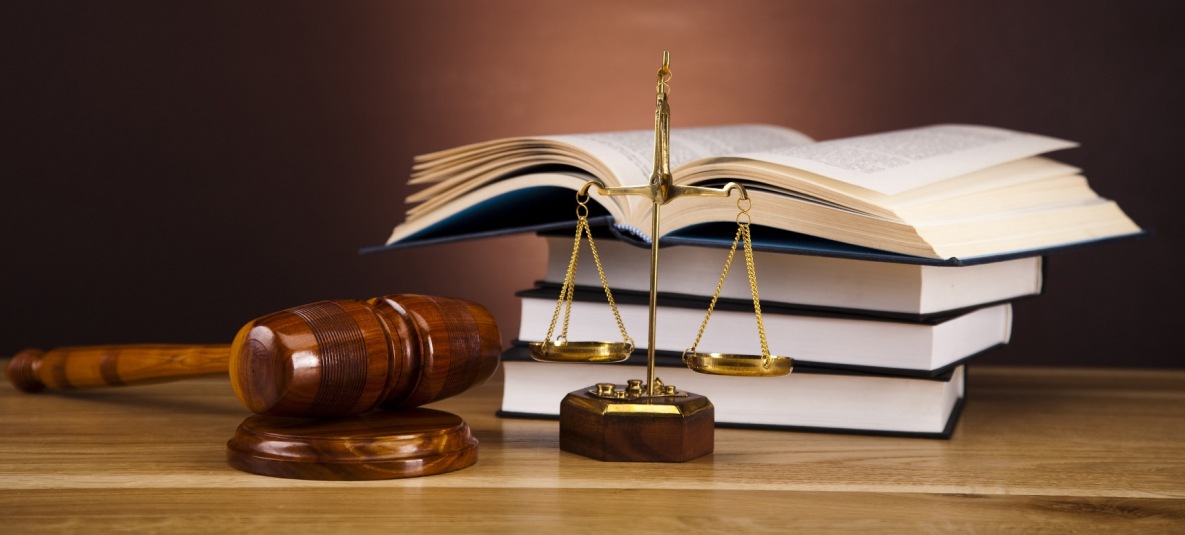This is a symbol of the whole Shoah history, the system of concentration camps and an unrecorded crisis of evil. Currently the Museum budget includes its own revenues and subventions of the Polish Ministry of Culture and National Heritage, but also, among others, funds from the European Union and the Auschwitz-Birkenau Foundation. . Auschwitz, the largest and arguably the most notorious of all the Nazi death camps, opened in the spring of 1940. This was according to the Nazi racist doctrine proclaiming biological inequality of nations and the right of dominance of the superior German peoples over inferior peoples like Jews, Roma or Slavs. This is about 2 miles (just over 3 km) from the Main Camp. At its peak of operation, Auschwitz consisted of several divisions. Like most German concentration camps, Auschwitz I was constructed for three purposes: Like some concentration camps, Auschwitz I had a gas chamber and crematorium. It was originally established in 1940 and later referred to as "Auschwitz I" or "Main Camp.". Over 3.3 million army personnel died at the hands of the Nazis through starvation, disease, lack of facilities or mass shootings. Plans for massive deportations of Jews and Slavs. Located in southern Poland, Auschwitz initially served as a detention center for political prisoners. The concentration and extermination camp Auschwitz (also called Auschwitz-Birkenau) was the largest to be set up by Nazi Germany. Both evacuation routes, by rail or on foot, were littered with the bodies of prisoners who had either been shot or had died due to exhaustion or cold. The SS authorities transferred many of these Hungarian Jewish forced laborers within weeks of their arrival in Auschwitz to other concentration camps in Germany and Austria. More than 40 smaller facilities, called subcamps, dotted the landscape and served as slave-labor camps. Many camps worked their prisoners to death. Establishment of the Auschwitz-Birkenau State Museum. New York: Public Affairs, 2005. The use of forced labour first began to grow significantly in 1937, as It is the biggest Extermination site, a symbol of its monstrous entirety. It is also tens of thousands of objects of a special nature, special meaning, and special symbolism. This section will explain the different types of camps used at different points by the Nazis. The Auschwitz II camp combined two functions: center of the direct extermination of the Jews. Killing Centers: An Overview | Holocaust Encyclopedia Langbein, Hermann. They were brought to and imprisoned in Auschwitz throughout its entire time of operation. The Museum is subject to the Polish Ministry of Culture and National Heritage and is financed by Poland, which from the very beginning committed itself to preserve the memory of the crimes committed in that Nazi German Auschwitz concentration and extermination camp. Until November 1944 the camp functioned as a factory for mass murder, receiving transports from all over Europe. Its great historical and emotional value makes the camp art exceptionally valuable, with a universal message that everyone who sees it can understand. Auschwitz was located on a former military base outsideOswiecim, a town in southern Poland situated near Krakow, one of the countrys largest cities. On orders from Himmler, camp officials began dismantling the crematoria. , but this soon expanded to also include Jehovahs Witnesses, homosexuals, Roma, and so called They deployed approximately 110,000 at forced labor in the Auschwitz camp complex. The Auschwitz concentration camp was located on the outskirts of Owicim in German-occupied Poland. This document shows a list of General Camp Orders for all Prisoners of War. In March new gas chambers and crematoria opened at Auschwitz-Birkenau, dramatically increasing the camp's killing capacity. Eventually it had a network of more than 40 satellite camps. The Nazis believed that Soviet citizens were subhuman and racial enemies due to Soviet I would recommend that you visit independently and buy a guide book once there. Four large crematoria buildings are constructed between March and June 1943. In January 1945, with the Soviet army approaching, Nazi officials ordered the camp abandoned and sent an estimated 60,000 prisoners on a forced march to other locations. In November 1944, two months before the liberation, another administrative division was carried out, and this division of the camps lasted until the liberation of Auschwitz in January 1945: KL Auschwitz I and KL Auschwitz II were combined into one complex and their former name, KL Auschwitz, was reinstated; The camps were opened over the course of nearly two years, 1940-1942. You defiantly need to visit both sites. KL Auschwitz was the largest of the German Nazi concentration camps and extermination centers. Once inside, the prisoners were exposed to Zyklon-B poison gas. Survival in Auschwitz: The Nazi Assault on Humanity. Auschwitz, situated around 50km west of Krakow in Poland, was the largest, consisting of a network of camps. Upon arrival in Gliwice and Wodzislaw, the prisoners were put on unheated freight trains and transported to concentration camps in Germany, particularly to. Auschwitz closed in January 1945 with its liberation by the Soviet army. If you are a resident of another country or region, please select the appropriate version of Tripadvisor for your country or region in the drop-down menu. Articles with the HISTORY.com Editors byline have been written or edited by the HISTORY.com editors, including Amanda Onion, Missy Sullivan and Matt Mullen. Auschwitz is the most recognizable symbol and place of genocide in the world. How were millions of people so vulnerable to fascism? Conditions inside the camps were usually miserable, with scarce food and poor sanitation widespread. In 1943, Ruth was incarcerated in Westerbork transit camp and later Bergen-Belsen concentration camp with her mother and two sisters. This information package includes also a mini dictionary of terms from the history of Auschwitz. New York: Collier Books, 1986. As a result of these conditions, death rates in labour camps were extremely high. Auschwitz III, also called Buna or Monowitz, was established in October 1942. For those prisoners who initially escaped the gas chambers, an undetermined number died from overwork, disease, insufficient nutrition or the daily struggle for survival in brutal living conditions. Originally designed and developed by the London Jewish Cultural Centre, A survivor reflects on life in the ghetto, Treatment of prisoners in the early camps, Chemno(in operation December 1941-January 1945), Beec (in operation March-December 1942), Sobibr (in operation May-July 1942 and October 1942-October 1943, Treblinka (in operation July 1942-August 1943), Majdanek(in operation September 1942-July 1944), Auschwitz-Birkenau(in operation March 1942-January 1945). The Germans crushed the revolt and killed almost all of the prisoners involved in the rebellion. The prisoner of war camps were subject to strict rules and regulations. The Auschwitz Memorial is more than extensive grounds and original camp blocks, barracks, and guard towers. In total almost 50 sub-camps of Auschwitz were established between 1942-1945. There were four gas chambers in the camp that used Zyklon B gas. To complete this mission, Hitler ordered the construction of death camps. On 20 January 1945 the SS blew up the gas chambers and crematoria that had already been put out of service some time earlier while the last one, still fully operational, was blown up on 26 January. At the same time, this invasion brought thousands of potential new workers under Nazi control. They also started the initial elimination and destruction of the evidence of their crimes among others, the prisoners registers and records of the Jews murdered in gas chambers were burnt. Those deported to the camp complex were gassed . Countless prisoners died during this process; those who made it to the sites were sent on trains to concentration camps in Germany. Auschwitz concentration camp definition. They were then assigned to forced labor at the main camp or elsewhere in the complex, including the subcamps. The first task of the museum was to safeguard the former camp, its building and environs, to gather evidence and materials concerning German atrocities committed at Auschwitz, to subject them to scientific scrutiny and to make them publicly available. . Farben established a factory in which its executives intended to exploit concentration camp labor to manufacture synthetic rubber and fuels. Sanitation and facilities were extremely poor across all camps. International Holocaust Remembrance Day | Holocaust Encyclopedia For another, it was in close proximity to the string of rail lines used to transport detainees to the network of Nazi camps. In mid-January 1945, when the front line was broken by the Red Army and its troops were approaching Cracow, 70 km away from the camp, the final evacuation of prisoners started. Roma Bergen-Belsen & Auschwitz | Sky HISTORY TV Channel There are also no texts mentioning Japanese nuclear bombs dropped on Hiroshima and Nagasaki as the geographical logic would suggest. SS units forced nearly 60,000 prisoners to. Auschwitz-Birkenau was also a killing center and played a central role in the German effort to kill the Jews of Europe. This is the version of our website addressed to speakers of English in United Kingdom. Of the three camps established near Oswiecim, the Auschwitz-Birkenau camp had the largest total prisoner population. About. Farben invested more than 700 million Reichsmarks (about 2.8 million US dollars in 1941 terms) in Auschwitz III. Some subcamps, such as Freudenthal and Bruenn (Brno), were located in Moravia. In late January 1945, SS and police officials forced 4,000 prisoners to evacuate Blechhammer on foot. Find topics of interest and explore encyclopedia content related to those topics, Find articles, photos, maps, films, and more listed alphabetically, Recommended resources and topics if you have limited time to teach about the Holocaust, Explore the ID Cards to learn more about personal experiences during the Holocaust. In general, subcamps that produced or processed agricultural goods were administratively subordinate to Auschwitz-Birkenau. Auschwitz: Concentration Camp, Facts, Location - History Over the course of the Holocaust, more than three million people were killed at extermination camps. If you had to choose one to see which would it be, or is it a case of making time to see both ? Anatomy of the Auschwitz Death Camp. The camp included sections for women; men; a family camp for, (Gypsies) deported from Germany, Austria, and the Protectorate of Bohemia and Moravia; and a family camp for Jewish families deported from the, Other (including concentration camps): 34,000. , the role of Auschwitz-Birkenau in the German plan to murder the Jews of Europe achieved its highest effectiveness. The SS murdered about 800 prisoners during the march to the Gross-Rosen concentration camp. Financial help from Germany and other countries and associations, including the French Shoah Memory Foundation, as well as from individuals made selected preservation works and projects to commemorate the victims possible. So the former has more exhibits in the buildings; the latter is where most of the genocide took place, and was almost destroyed by the Nazis covering-up the crimes. The aim was not only to incapacitate psychologically but also to physically decimate the whole population. more. The first administrative division of Auschwitz, 1943-1944. SS officials also killed as many as 200 prisoners left behind in Blechhammer as a result of illness or unsuccessful attempts to hide. Only at the Auschwitz Memorial is it possible, however, not only to get to know the history of the camp operation and gain direct access to the first-hand accounts of witnesses, but also to see the evidence of the Extermination with our own eyes: the ruins of the gas chambers, crematoria and other leftover camp remains. I still think of it often. As such, they treated Soviet prisoners of war particularly harshly. post-graduate studies, seminars, conferences, stays and study trips, International Centre for Education about Auschwitz and the Holocaust. , which set out the basic treatment of prisoners of war, but these were rarely upheld in full by the Nazis. Incoming prisoners were assigned a camp serial number which was sewn to their prison uniforms. "Polish concentration camps" is a misinforming, untrue definition, giving rise to suspicions of revisionism, and a historically deceiving name used by some media, publications and historical documents with respect to the Nazi German concentration camps, including KL Auschwitz, which were located within Poland's borders. KL Auschwitz III was renamed KL Monowitz and included all the subcamps. Auschwitz concentration camp ( German: Konzentrationslager Auschwitz ( pronounced [kntsntatsionsla avts] ( listen) ); also KL Auschwitz or KZ Auschwitz) was a complex of over 40 concentration and extermination camps operated by Nazi Germany in occupied Poland (in a portion annexed into Germany in 1939) [3] during World War II and The largest mass murder installations in occupied Europe in the form of gas chambers were created in Birkenau, where the Nazis murdered most of the Jewish deportees. The SS authorities transferred many of these Hungarian Jewish forced laborers within weeks of their arrival in Auschwitz to other concentration camps in Germany and Austria. From May 1941 until July 1942, the SS had transported prisoners from Auschwitz I to the Buna Detachment, at first on foot and later by rail. During its three years of operation, it had a range of functions. Images from www.auschwitz.org may be used only in publications relating to the history of the German Nazi concentration and extermination camp Auschwitz-Birkenau or the activities of the Auschwitz Memorial. It is also the objects connected with the life of prisoners inthe camp, which bear testimony not only to the primitive living and hygienic conditions and starvation, but also with attempts to preserve humanity behind the barbed wire of Auschwitz. Auschwitz-Birkenau plays a central role in the German plan to exterminate the Jews of Europe. Following the start of the Second World War,the Nazis occupied a number of countries. Since 2010, the UN has designated specific themes for the annual commemorations that focus on topics such as collective experiences and . The largest of these subcamps, Monowitz, also known as Auschwitz III, began operating in 1942 and housed some 10,000 prisoners. Auschwitz, also known as Auschwitz-Birkenau, opened in 1940 and was the largest of the Nazi concentration and death camps. When we think of the crimes of Nazi doctors, what comes to mind are their cruel and sometimes fatal experiments Yet when we turn to the Nazi doctors role in Auschwitz, it was not the experiments that were most significant. But when we speak of new territory in Europe today we must principally think of Russia and the border states subject to her. However, the bathhouses to which they marched were disguised gas chambers. Germany had signed and agreed to the terms of the at the Auschwitz I camp, but this was soon expanded. Zyklon B The administration of the camps had a distinct disregard for inmates lives and health, and as a result, tens of thousands of people perished within the camps. Inmates are usually exploited for their labour and kept under harsh conditions, though this is not always the case. The Auschwitz I camp housed mainly the central employment office, the political department or the camp Gestapo, the garrison administration, central supply warehouses, workshops and SS enterprises most of the camp prisoners were employed there. over a year ago Answer 3 answers Reviewed this property The SS had selected them from the Sachsenhausen concentration camp outside of Berlin. To escape antisemitism in Germany, the Wiener family had moved to Amsterdam in 1933. As soon as it was possible, some of them came to the former camp to protect its buildings and ruins. After the start of World War II, Adolf Hitler (1889-1945), the chancellor of Germany from 1933 to 1945, implemented a policy that came to be known as the Final Solution. Hitler was determined not just to isolate Jews in Germany and countries annexed by the Nazis, subjecting them to dehumanizing regulations and random acts of violence. Thousands had been killed in the camps in the days before these death marches began. During the first year of the camps existence, the SS and police cleared a zone of approximately 40 square kilometers (15.44 square miles) as a development zone reserved for the exclusive use of the camp. All Rights Reserved. Auschwitz Birkenau - UNESCO World Heritage Centre They conducted pseudoscientific research on infants, twins, and dwarfs, and performed forced sterilizations and castrations of adults. Those Jews who were not sent directly to gas chambers were selected for forced labor. was selected as the method of murder. As in most Nazi camps, conditions in forced labour camps were inadequate. The camp included sections for women; men; a family camp for Roma (Gypsies) deported from Germany, Austria, and the Protectorate of Bohemia and Moravia; and a family camp for Jewish families deported from the Theresienstadt ghetto. Those in attendance considered the best method for sterilizing an unlimited number of people in the shortest period and easiest manner possible. A Polish concentration camp or a German Nazi concentration camp? mid 1942 1944, when most of those deported and killed there were Jews. These were separate from the SS-run concentration camps, where prisoners were also forced to perform labour. The Germans initially established the Buna subcamp there in 1942. These camps were called prisoner of war, or POW, camps. Around the beginning of September, 1941, the SS at Auschwitz I conducted the first tests of Zyklon B as a mass murder agent, using Soviet POWs and debilitated Polish prisoners as victims. During the Second World War as a result of the German aggression and its consequences approximately six million Polish citizens died: approximately 3 million Polish Jews; The idea of German living space (Lebensraum) as well as the nature of the demographic changes in the relevant areas were described in detail in many documents of the Nazi movement. The visit starts at the former Auschwitz I site. They make up a unique collection of items connected with the suffering of the people deported to Auschwitz to be killed immediately, and with those forced into slave labor by the Germans. The first international funds started flowing to the Museum only in the 1990s. Any interference in the integrity of the images including cropping or graphic processing is prohibited. Tens of thousands of prisoners, mostly Jews, were forced to march either northwest for 55 kilometers (approximately 30 miles) to Gliwice (Gleiwitz) or due west for 63 kilometers (approximately 35 miles) to Wodzislaw (Loslau) in the western part of Upper Silesia. Auschwitz, a German Nazi concentration camp historically correct term, adopted in such a form by UNESCO Nazi German concentration camps, the biggest of which was Auschwitz, were one of many measures serving the practical realization of the extermination policy (beside, among others, executions and annihilation in prisons and various penal camps and ghettos). In October 1944, a group of Auschwitz "Sonderkommando," young Jewish males responsible for removing corpses from crematoriums and gas chambers, staged a revolt. Thanks to the Ronald S. Lauder Foundation professional conservation studios were created in the Museum in 2003. Therefore, obtaining foreign funding is of major importance. Auschwitz, a Polish concentration camp misinforming and untrue term, suggesting an entirely false idea as for who is responsible for the crimes of German Nazis, and being an offensive form of revisionism for the victims. Most of the Slavic population was to be exterminated or resettled. It included Monowitz as well as sub-camps that did not fall under the Birkenau camp, mainly those located near the industrial centers). The Memorial is also supported by people of good will, helping with individual donations. Since the Auschwitz main camp (Auschwitz I) was a labor camp, arriving Jewish prisoners faced a selection process. See Auschwitz first then Birkenau puts the horror into a terrible visual perspective. Unlike the victims of the extermination centers killed immediately upon their arrival in the gas chambers, the prisoners of concentration camps stayed there for shorter or longer periods (some of them managed to survive the war). This idea was explained and complemented by Heinrich Himmler in July 1942: It is not our task to Germanise the East in the old sense, that is to teach the people there the German language and the German law, but to see to it that only people of purely Germanic blood live in the East.
Lessons From Hezekiah's Prayer For Healing,
Www Therossifiles Com Real,
Articles W





